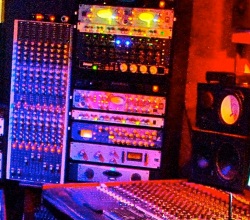
Proximity effect can also be a useful way to fake a little weight to an otherwise thin sound source. So pick and choose what really needs to go.
Generally, if there’s unwanted proximity effect or resonance, something sounds clouded or peaky – and with decent monitoring, these things are not too hard to find. Ideas such as “openness” and “thickness” should come into play when adding or subtracting these characteristics.
Highlighting or suppressing tones. This is the grey area for engineers. There’s a million different ways to highlight or suppress. And which ones to pick and choose become very much negotiable.
What makes a tone “good” vs. “bad” is truly in the ear of the beholder.
Tips For Using EQ
Cut, don’t boost – OK, well this is sort of like the old saying “feed a cold, starve a fever.” It harkens back to the yester years of exclusively working in the analog realm. Boosting was a fundamentally different practice than cutting. In the software world, this is not really as true.
However, there is an important psychological practice here. Everything sounds better when it’s louder. So boosting isn’t always the most honest way of enhancing the sound.
If,on the other hand you cut something – and that improves the quality of the sound – you know you’re doing it right.
Do what needs to be done – Nothing more and nothing less. Doing something for the sake of doing something is death to your mix. At the same time – if 30 dB of high end sounds good, DO IT.
Acoustic drums in particular often take a load of EQ in modern music – adding 10 dB of low end, cutting 6-10 dB of mid-range, and adding 15 dB of treble sounds like overkill to a kick drum – but if that’s what it takes so be it.
Different EQs sound different – So what’s up with all the EQs all over the place in big time mixer’s productions? Well, to quote Dave Pensado from his Sound-On-Sound interview, “I think you get more by not trying to get everything out of one EQ. Every EQ is good for certain things.”
This is quite true – some EQs are better for precise resonance removal, some are better for broad brush tone moves. In the analog world particularly, some EQs excel at high end sculpting – some are stronger in the lows – and some just have nice gain stages.
Don’t seek and destroy – Another common practice is to sweep a heavily boosted narrow notch and find “problem frequencies.” In my experience, every frequency will sound problematic this way. For some people, this technique works, but I’ve never had much luck.
My feeling is to take an experienced guess as to what frequency you are hearing, and check where you think something is going on with a moderate boost and a tight Q. Maybe move that back and forth around the area you think is troubling to get a precise area to effect.
Q is IMPORTANT – Q is just as important as the amount cut or boost being applied. A wider Q often yields a more transparent sound, but less focused as well. The idea behind both the amount of eq and the width, is to do just enough so that you barely notice it – if at all.
If bringing out a tone, go as wide as possible before you start effecting things you don’t want to effect. If removing an ugly sound, go only as wide as necessary to get the sound, and leave the rest as in tact as possible.
In Conclusion…
Remember – every sound already has an EQ curve – and has been EQ’d many times over. So there’s never any reason to EQ for the sake of EQ’ing. The key is to figure out exactly what is needed for what you are trying to accomplish, and do it.
Don’t be EQ happy, but don’t be shy of cranking the knobs to extremes either.
Matthew Weiss is the head engineer for Studio E, located in Philadelphia. Recent credits include Ronnie Spector, Uri Caine, Royce Da 5’9” and Philadelphia Slick.
Be sure to visit the Pro Audio Files for more great recording content. To comment or ask questions about this article go here.
